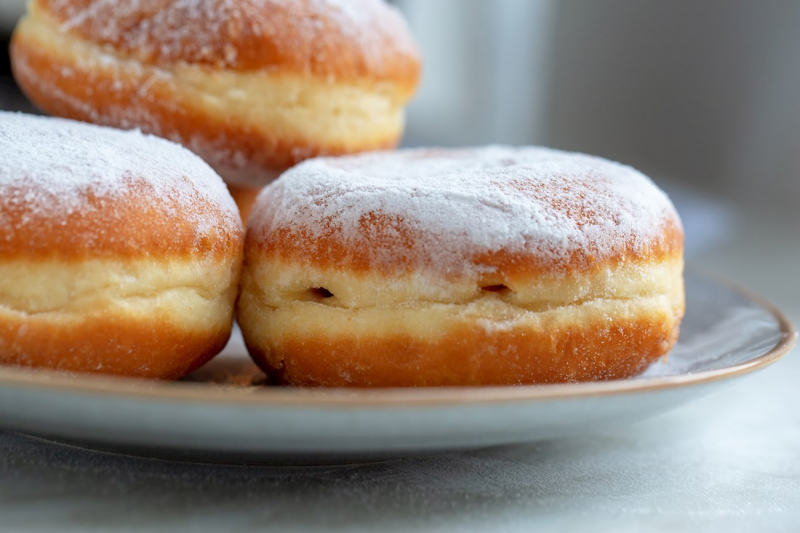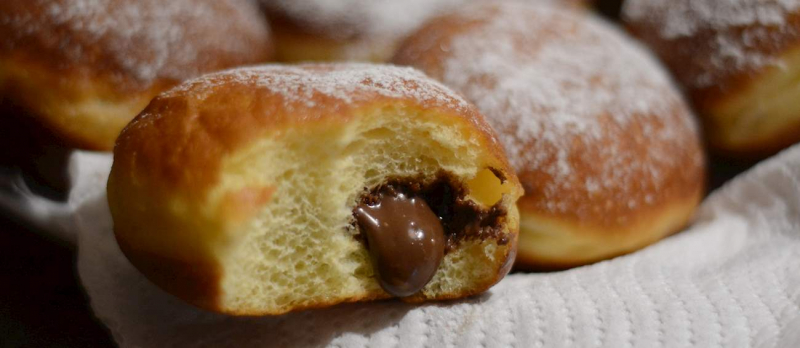Krapfen

Krapfen were most likely the first European-style doughnuts to appear, and were quickly followed by similar varieties in other countries. Traditionally, these pastries are made with leavened dough that is deep-fried until golden and crispy on the outside while remaining soft, light, and airy on the inside.
Though krapfen can be served plain, they are most commonly filled or topped with jams, vanilla or chocolate custards, and powdered sugar or chocolate drizzled on top. The word krapfen dates back to the 9th century, and recipes in German can be found as far back as the 14th century.
Sweet versions of the pastry became popular, and they have remained closely associated with Carnival, the festive period preceding Christian Lent. During the Carnival, one krapfen in a batch filled with jam and fruit preserves may contain a mustard filling as a prank.
Doughnuts are thought to have spread throughout many Central European countries, which adopted the technique but gave it different regional names. As a result, krapfen is also known as Berliner, pfannkuchen, faschingskrapfen, krebbel, or kreppel in Germany.
They are known as pączki or krepel in Poland, fánk in Hungary, šišky in Slovakia, and koblihy in the Czech Republic. In Slovenia, they are known as krofi, whereas in Croatia, Bosnia and Herzegovina, and Serbia, they are known as krofne or krafne.
In St. Petersburg, Russia, the doughnuts are known as pyshki (either ring-shaped or without a hole), and a local café has been serving the original recipe since the 1960s.
















